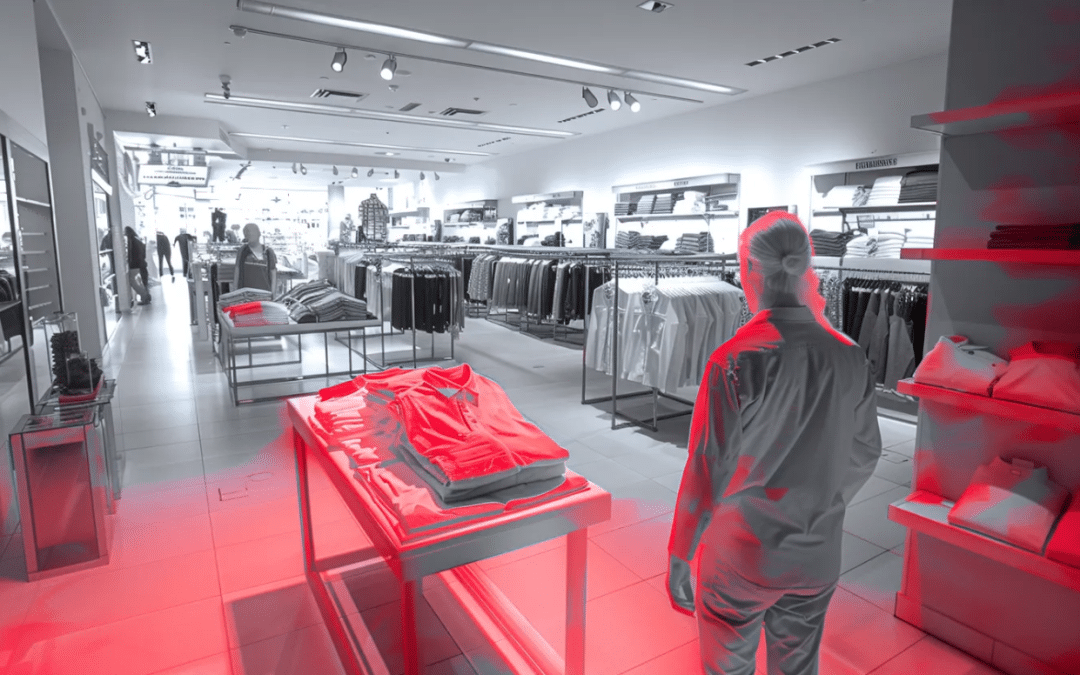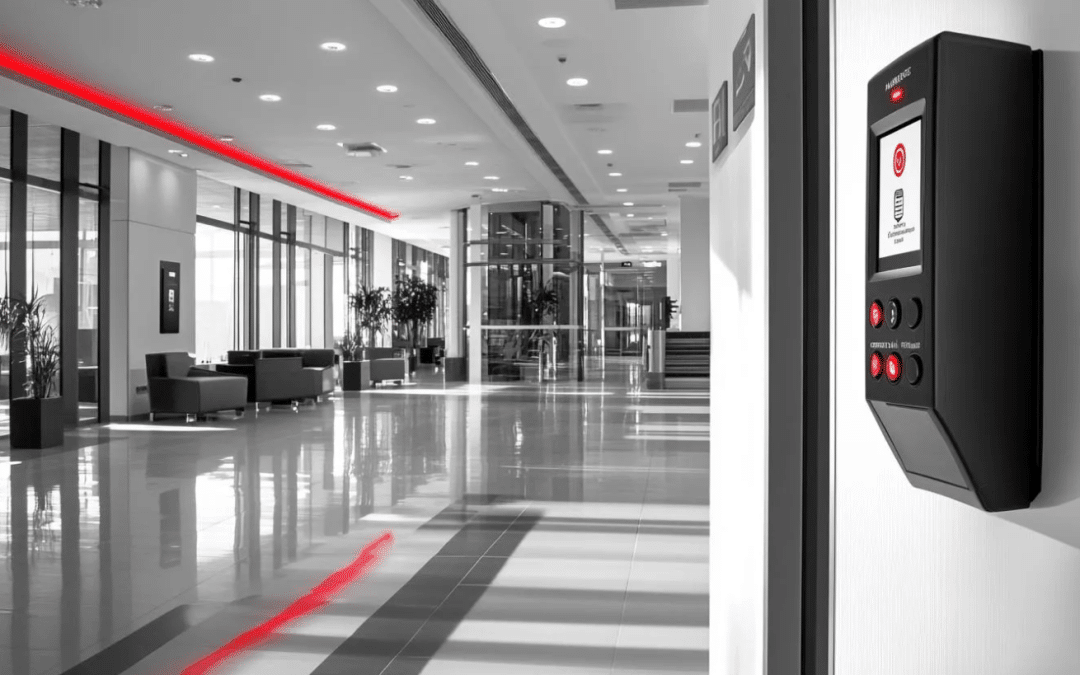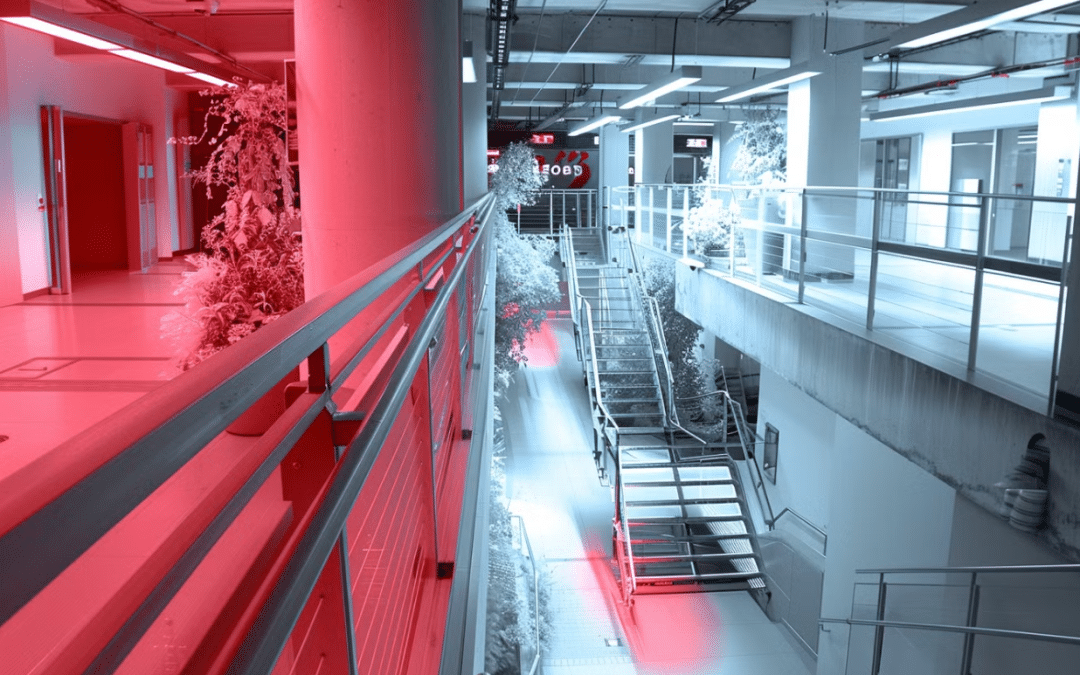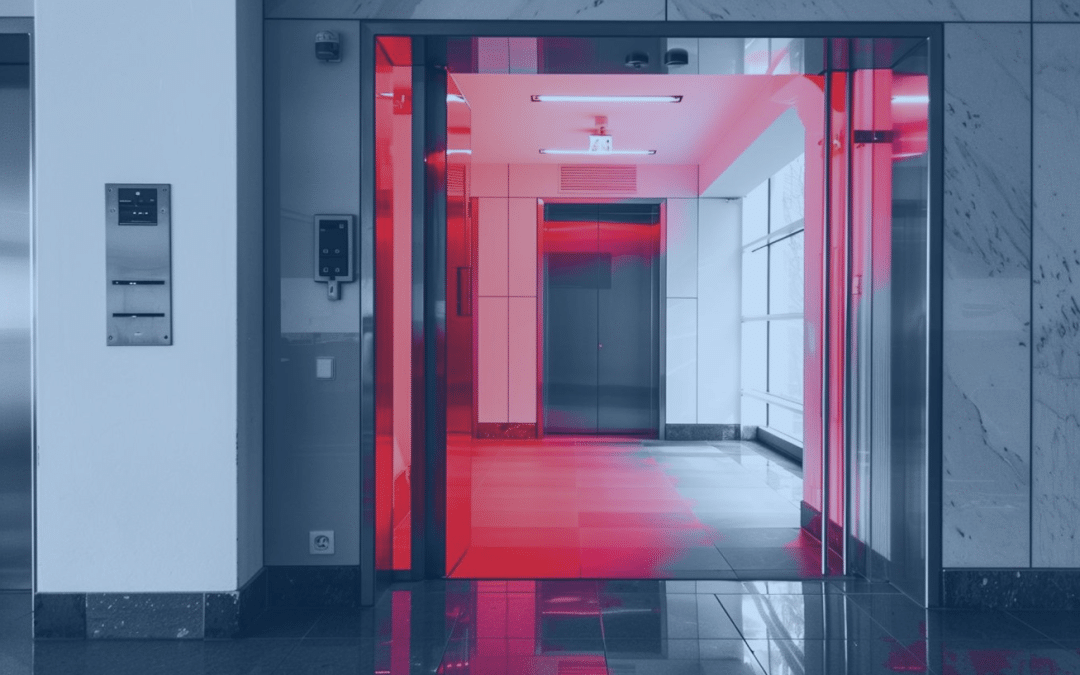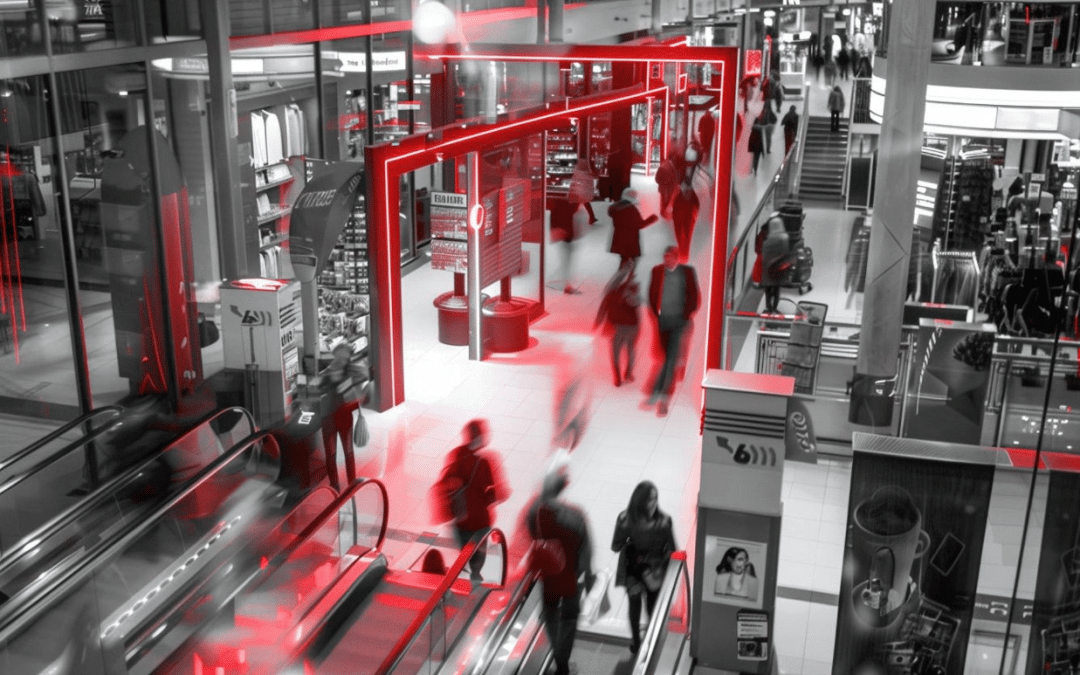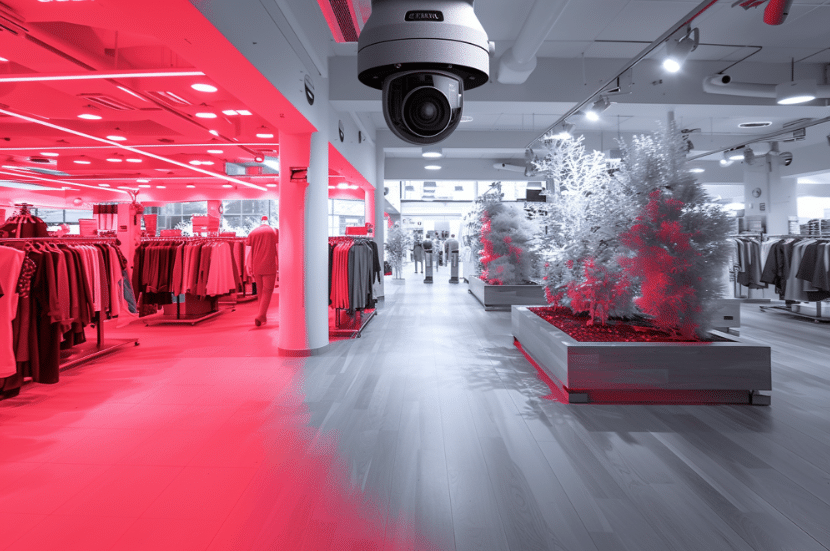Are you wondering how to effectively secure your business while optimizing the flow of people? Access control is the ideal solution to this challenge. In this article, we'll explore best practices for setting up a high-performance access control system and managing flows optimally. Ready to transform your facility's security?
What is a modern access control system?
Before diving into best practices, it's essential to understand what a modern access control system really is. Gone are the days of simple mechanical locks! Today, these systems are the high-tech guardians of your premises.
A modern access control system is a set of devices and software used to manage and monitor entrances and exits to a building or specific area. It goes far beyond simply opening doors: it's a genuine tool for managing security and the flow of people.
The essential components of a complete solution
An effective access control system generally consists of the following components:
- RFID badge or card readers
- Biometric devices (fingerprints, facial recognition)
- Electronic or electromagnetic locks
- Centralized management software
- Integrated surveillance cameras
Each of these elements plays a crucial role in creating a robust and flexible safety system.
The importance of data centralization
One of the most important aspects of a modern access control system is data centralization. This centralization enables real-time access management, complete traceability of entries and exits, and greater responsiveness in the event of an incident.
"A modern access control system isn't just a physical barrier, it's a genuine management tool that provides a global vision of corporate security," says Jean Dupont, security expert at Lease Protect France.
Why install access control at your facility?
Still hesitating to take the plunge? Let me convince you of the many benefits an access control system can bring to your business.
Concrete benefits for your safety
Security is obviously the first benefit of an access control system. But do you really know how much it can enhance your facility's protection?
- Intrusion protection : By limiting access to authorized persons only, you considerably reduce the risk of intrusion and theft.
- Access traceability : Every entry and exit is recorded, enabling us to know who was present at what time in the event of an incident.
- Emergency management : In the event of an evacuation, the system can provide a precise list of the people present in the building, facilitating the work of the emergency services.
Organizational benefits
Beyond security, an access control system offers many organizational advantages:
- Optimizing traffic flows : By analyzing access data, you can identify areas of congestion and improve traffic flow on your premises.
- Adapting to new ways of working : With the rise of telecommuting and flexible working hours, an access control system enables fine-tuned management of authorizations, adapted to each employee.
Did you know?
According to a recent study by Mordor Intelligence, the global access control market is expected to reach 5.20 billion USD by 2029, with a compound annual growth rate (CAGR) of 8.09% between 2024 and 2029. This growth reflects the increasing importance of these systems in modern corporate security.
How to choose an access control system?
Now that you've convinced yourself of the usefulness of an access control system, how do you choose the one that's right for your business? Here are a few key points to consider.
The different technologies available
There are several access control technologies, each with its own advantages:
- RFID : Uses contactless cards or badges, quick and easy to use.
- Biometric : Based on unique physical characteristics (fingerprints, face), offers a high level of security.
- Access codes : Simple to set up, but less secure as codes can be shared.
The choice of technology will depend on your specific security needs and the nature of your business.
Key points to consider
When choosing your system, don't overlook these important aspects:
- Budget and scalability : Consider not only the initial cost, but also the possibility of extending the system in the future.
- Compatibility with existing systems : Make sure the new system can be integrated with your existing security equipment.
- Ease of use : An overly complex system is likely to be misused by your employees.
What are the steps to successful implementation?
Once you've made your choice, it's time to move on to installation. Here are the key steps for successful installation of your access control system.
The preparation phase
Don't neglect this crucial step! Good preparation is the key to a successful installation.
- Needs audit : Identify your precise needs in terms of security and flow management.
- Zone mapping : Determine the different areas of your facility and their access levels.
This phase enables us to design a customized system, perfectly adapted to your company.
A concrete example: the transformation of a sensitive industrial site
To better understand the implementation of an access control system, let's take the example of a 500-employee industrial site that deployed a complete access management solution. The aim of this structure was to secure various sensitive areas, while at the same time facilitating the circulation of staff and visitors.
The installation took place in several phases:
- Phase 1: Installation of digital locks at main entrances, coupled with an intrusion detection system
- Phase 2: Deployment of magnetic card-based access control for production areas
- Phase 3: Installation of biometric readers for the most sensitive areas (data storage, server rooms)
The results were convincing: a 95% reduction in safety incidents, optimized traffic flows, and considerable time savings in the management of authorizations. The use of intelligent physical barriers has enabled the creation of different levels of security, adapted to the specific needs of each zone.
Deployment
Once preparation is complete, it's time for action!
- Installation and configuration : Now is the time to set up the physical equipment and configure the management software.
- User training : Don't forget to train your employees to use the new system. This is essential for its adoption and effectiveness.
How to optimize day-to-day access management?
Congratulations on your system! But how do you get the most out of it on a day-to-day basis?
Good administration practices
Effective management of your access control system requires these best practices:
- Rights management : Assign access rights precisely and update them regularly.
- Event monitoring : Regularly analyze access logs to detect any anomalies.
- Reactivity : Set up clear procedures in the event of an incident (loss of badge, attempted intrusion, etc.).
"Rigorous day-to-day management is the key to an effective access control system. It's what turns a simple tool into a real asset for the company," emphasizes Marie Martin, Security Manager at a major French company.
Regulatory compliance and data protection
Electronic access management involves the processing of sensitive data, and must therefore comply with current regulatory requirements. Particular attention must be paid to several aspects:
- Identity protection : The storage and use of identification data must comply with strict IT security rules.
- Access rights : Applying the principle of least privilege is essential to limit risks
- Traceability : Retention of access logs must comply with legal storage periods
To guarantee compliance, it is essential to establish a clear security policy, defining authentication processes and authorization levels. This documentation helps to demonstrate the implementation of best practices in the event of an audit.
Preventive maintenance
To ensure the longevity and efficiency of your system, regular maintenance is essential:
- Regular checks : Periodically test all equipment (readers, locks, etc.).
- Security updates : Make sure your management software is always up to date with the latest features and security patches.
Which solution for your facility?
You're now convinced of the importance of an access control system, but you're wondering which solution would be best for your establishment? That's where Lease Protect France comes in!
Our expertise at your service
At Lease Protect FranceWe don't just sell you a system. We're with you every step of the way:
- In-depth analysis of your needs
- Tailor-made solutions
- Installation and configuration by our experts
- Training your teams
- Support and ongoing maintenance
Our aim? To provide you with an access control system that not only secures your establishment, but also optimizes your workflow and boosts your productivity.
Our innovative tools
At Lease Protect France, we are proud to offer state-of-the-art tools:

LPLive : Our remote viewing solution lets you monitor your accesses in real time, wherever you are.
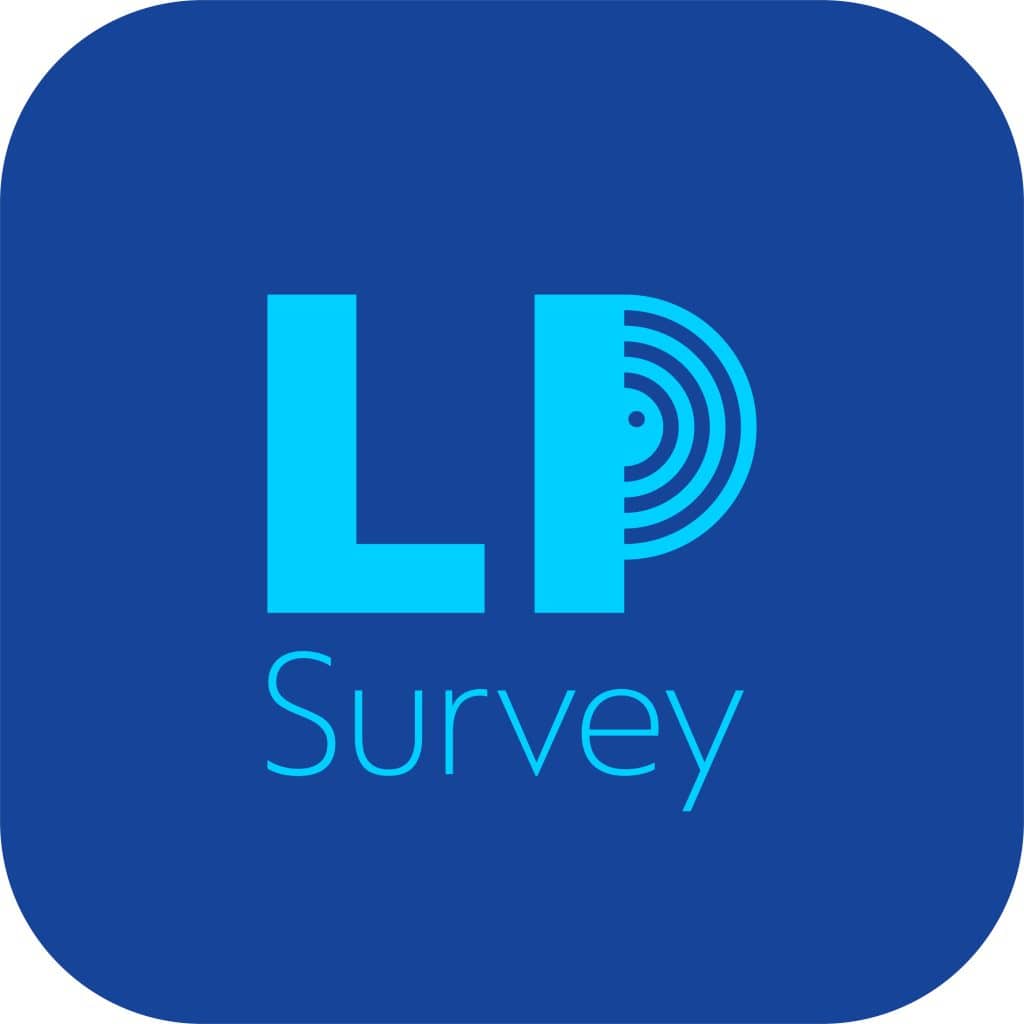
LPSurvey: This monitoring tool detects and reports any system malfunctions in real time, guaranteeing optimum security 24/7.
Ready to transform your company's security and flow management? Don't wait any longer! Contact us today for a free needs audit. Together, we'll design the access control solution that's right for your business. With Lease Protect France, choose intelligent security!

